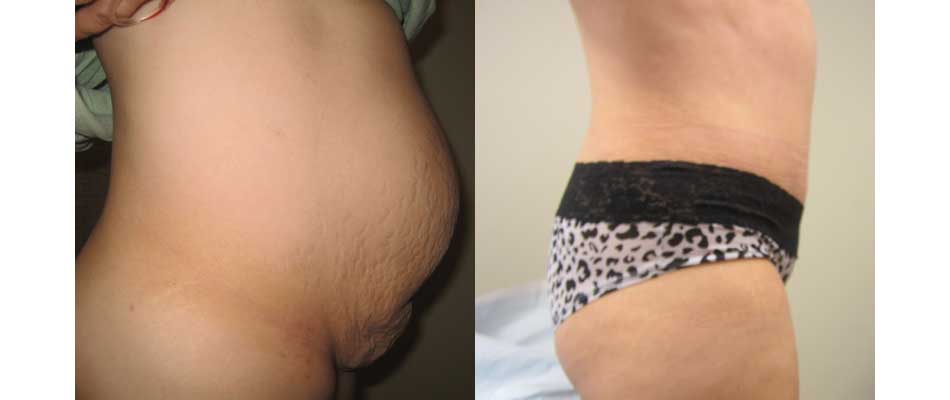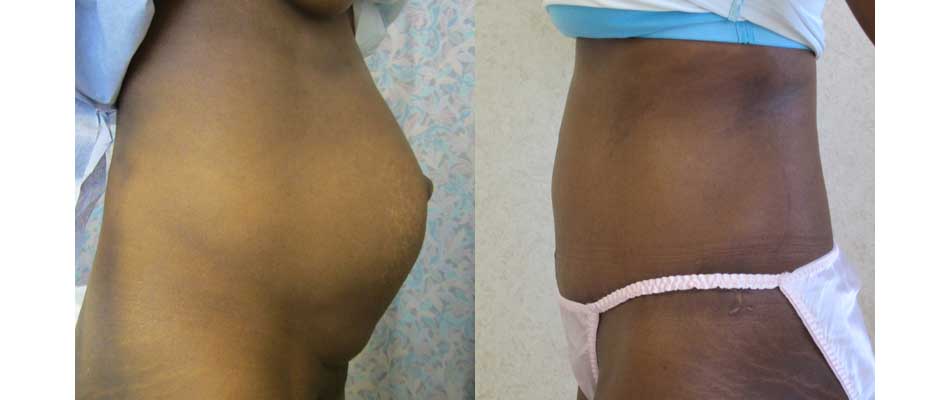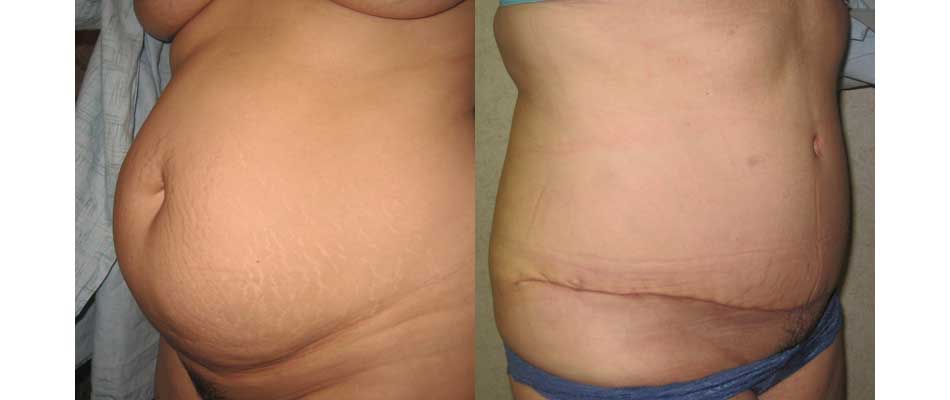Tummy Tuck (Abdominoplasty)
What is a Tummy Tuck?
A tummy tuck – or abdominoplasty – is a type of plastic surgery that flattens and shapes your abdominal area by removing excess fat and skin. Most of the time, it includes tightening weakened or separated abdominal muscles. The result is a sleeker, firmer abdominal profile.
The most common reasons for abdominoplasty are conditions that cause a protruding or sagging abdomen, like:
- Age
- Genetics
- Weight fluctuations
- Previous surgery
- Pregnancy
A tummy tuck can often remove stretch marks below the belly button and, sometimes, can even incorporate a previous C-section scar onto the tummy tuck scar.
Who Is a Good Candidate for a Tummy Tuck?
A tummy tuck isn’t suitable for everybody, but it is a good option for men or women who are:
- In overall good health
- Non-smokers
- At a stable weight
- Women not planning any more pregnancies
Tummy tucks are especially popular with women who’ve had pregnancies that resulted in stretched skin and muscles. It’s also a common choice for men or women who have lost significant weight but still have fat deposits or loose skin.
Tummy tuck results are meant to be permanent but do require some care to maintain. Weight fluctuations after surgery can affect the outcome.
A tummy tuck isn’t the right option for everyone. It’s not a substitute for healthy weight loss, and it is generally not suitable for patients who are:
- Women planning to have more children
- Men or women planning more weight loss
- Living with a severe chronic illness
- Smokers
- Anyone with significant abdominal scar tissue
- At a body mass index (BMI) greater than 30
How is a Tummy Tuck Performed?
A tummy tuck is performed in a hospital or outpatient surgery center using general anesthesia, which will put you to sleep. Surgery involves making incisions to remove fat from the area between the belly button and the natural bikini line, generally in line with your pubic hair. Then your surgeon will shape the skin and muscle to create a flatter profile. He’ll also make an incision around your belly button, as it will need to be separated from the surrounding tissues and repositioned. Surgery can last up to five hours.
What is a Mini Tummy Tuck?
Also called a partial tummy tuck, a mini tummy tuck is a less invasive abdominoplasty that shapes the area below the belly button. It requires a smaller incision and does not involve the belly button. Because it is less invasive than a complete tummy tuck, it requires less downtime and has a faster recovery time.
It’s an excellent option for people at, or nearly at, their ideal body weight and shape who only need a little help to reach their goal.
Recovery
After your surgery, you’ll have stitches and bandages on your abdomen and will need to wear a compression garment to support the site while it heals. You may go home with drainage tubes under your skin, which will be removed a few days after surgery.
You will need a driver to take you home after the procedure because of the anesthesia used. And, you need to have another adult home with you for at least the first night to assist you with things like preparing food and helping you to the bathroom.
Most patients find that taking a week off after surgery is best, and you’ll need to limit activity for four to six weeks.
How Much Does a Tummy Tuck Cost?
Most insurance plans won’t cover tummy tuck surgery. The overall cost of a tummy tuck will vary from surgeon to surgeon, based on several factors:
- The extent of your procedure
- The skill of your surgeon
- Geographic location
- Medical tests required
- The cost of anesthesia, the operating room, and other related expenses
- Prescriptions and compression garments for after surgery
While cost is an important consideration when deciding on any plastic surgery – it’s essential to choose a surgeon you feel comfortable with. Your surgeon’s skill and your confidence in him will help you feel more at ease throughout the process.
FAQs
How can I optimize my results?
Taking good care of your health before and after surgery can help you achieve your best results. Eat healthy food, rest, hydrate, manage stress, don’t smoke, and keep moving. Regular exercise before surgery benefits your whole body, but please wait until your surgeon says you may start exercising again after surgery. It is also critical that you understand and follow your post-operative instructions carefully.
Why is it important to quit smoking before surgery?
Smoking can slow the healing process because it decreases blood flow in the skin. It also increases the risk of tissue damage.
Is abdominoplasty risky?
Complications from abdominoplasty are rare but possible. Infection and bleeding are the most common complications. At your consultation, your surgeon will talk to you about the potential risks and what you can do to reduce your risk.
“Dr. Madry gave me a body of an 18 year old at 41… He did an amazing job on my tummy tuck and I am extremely happy. If I ever need PS again, he will be who I go to!!” – MQ

















